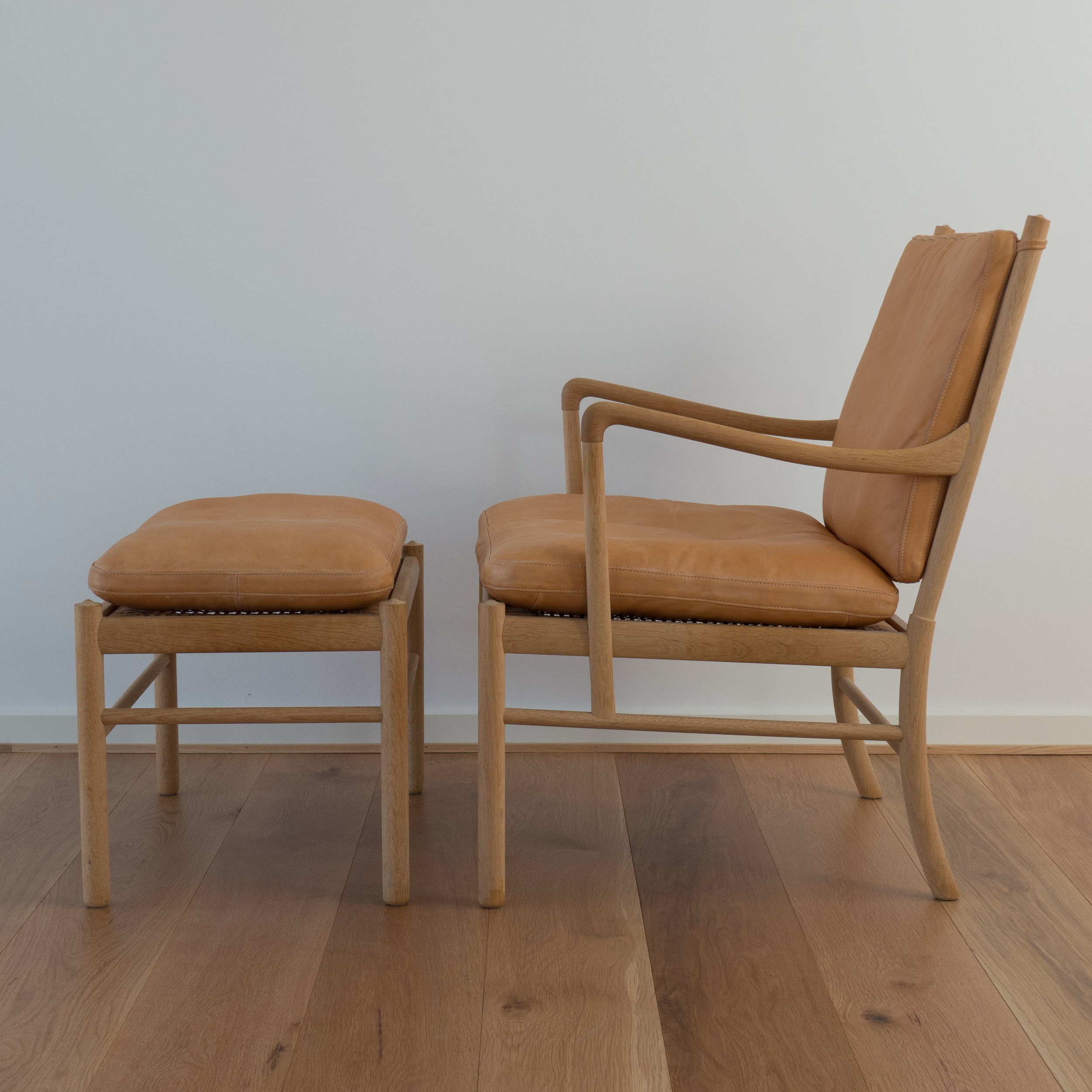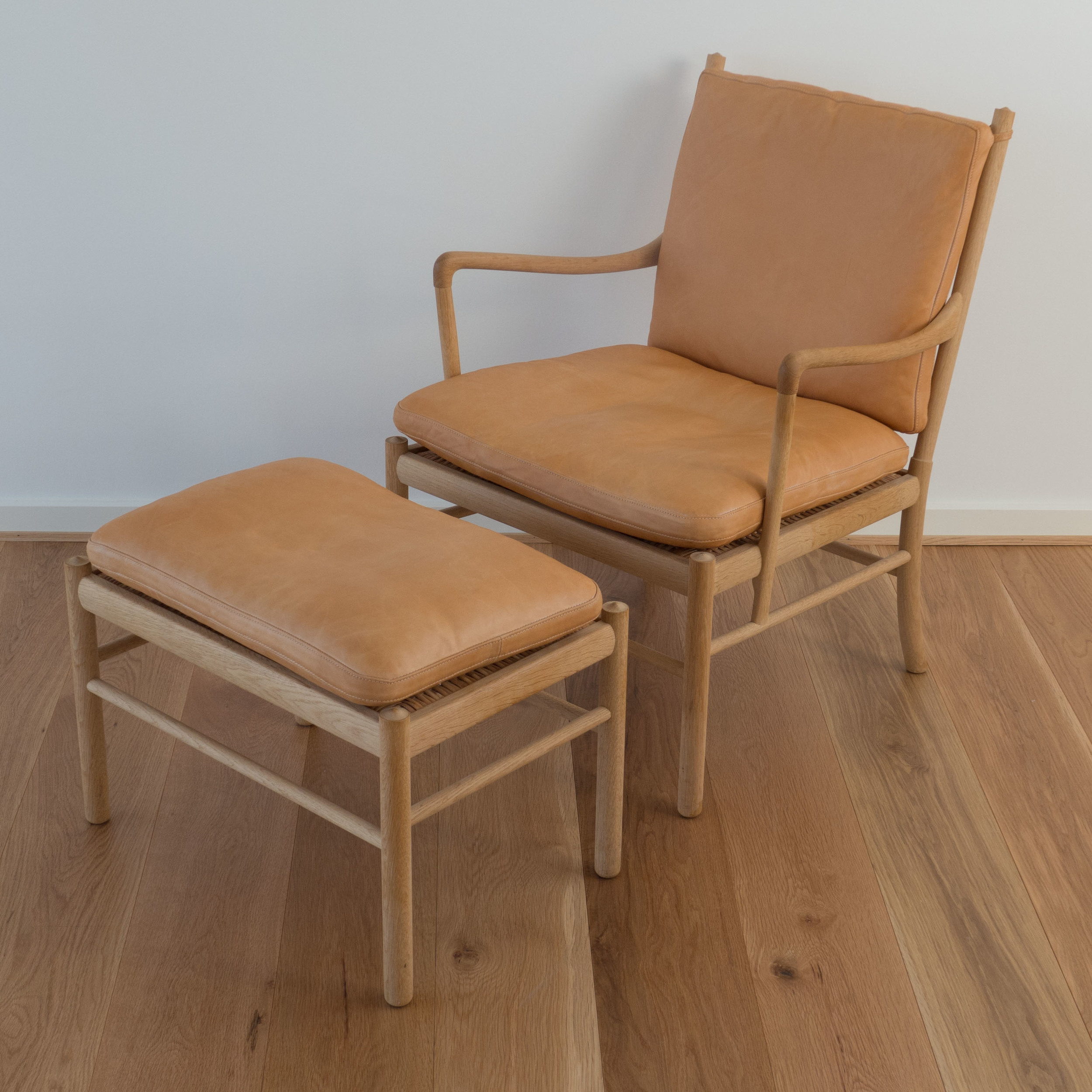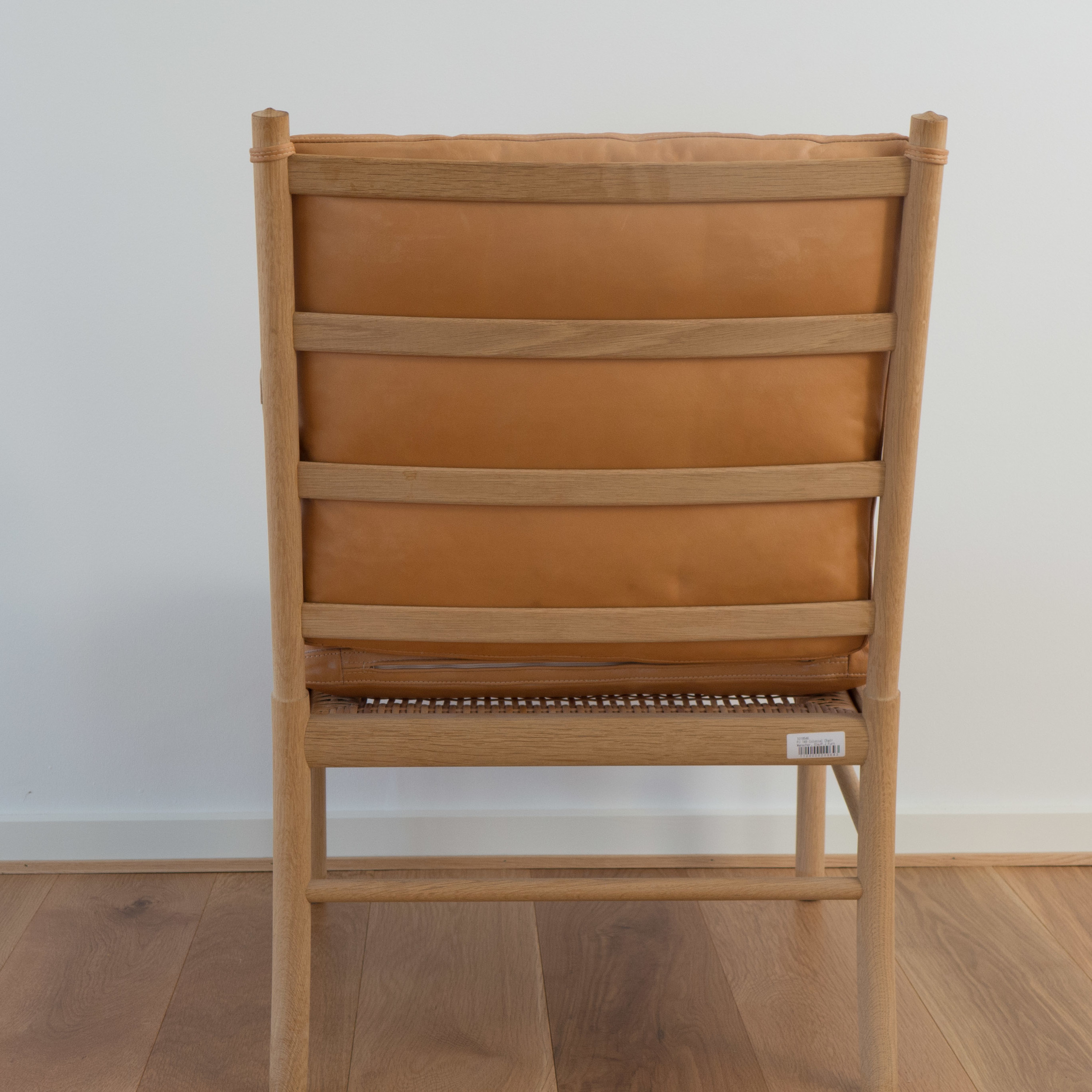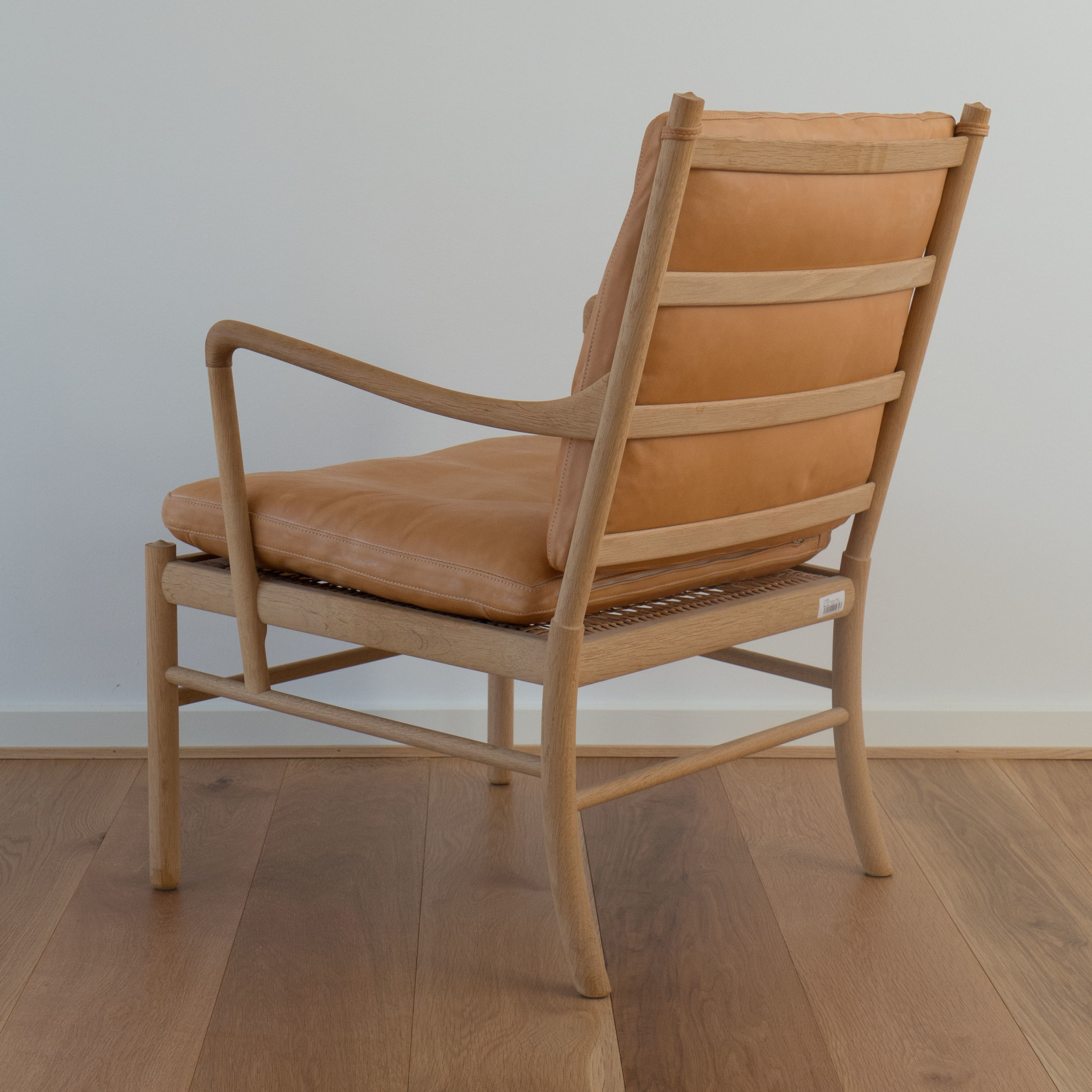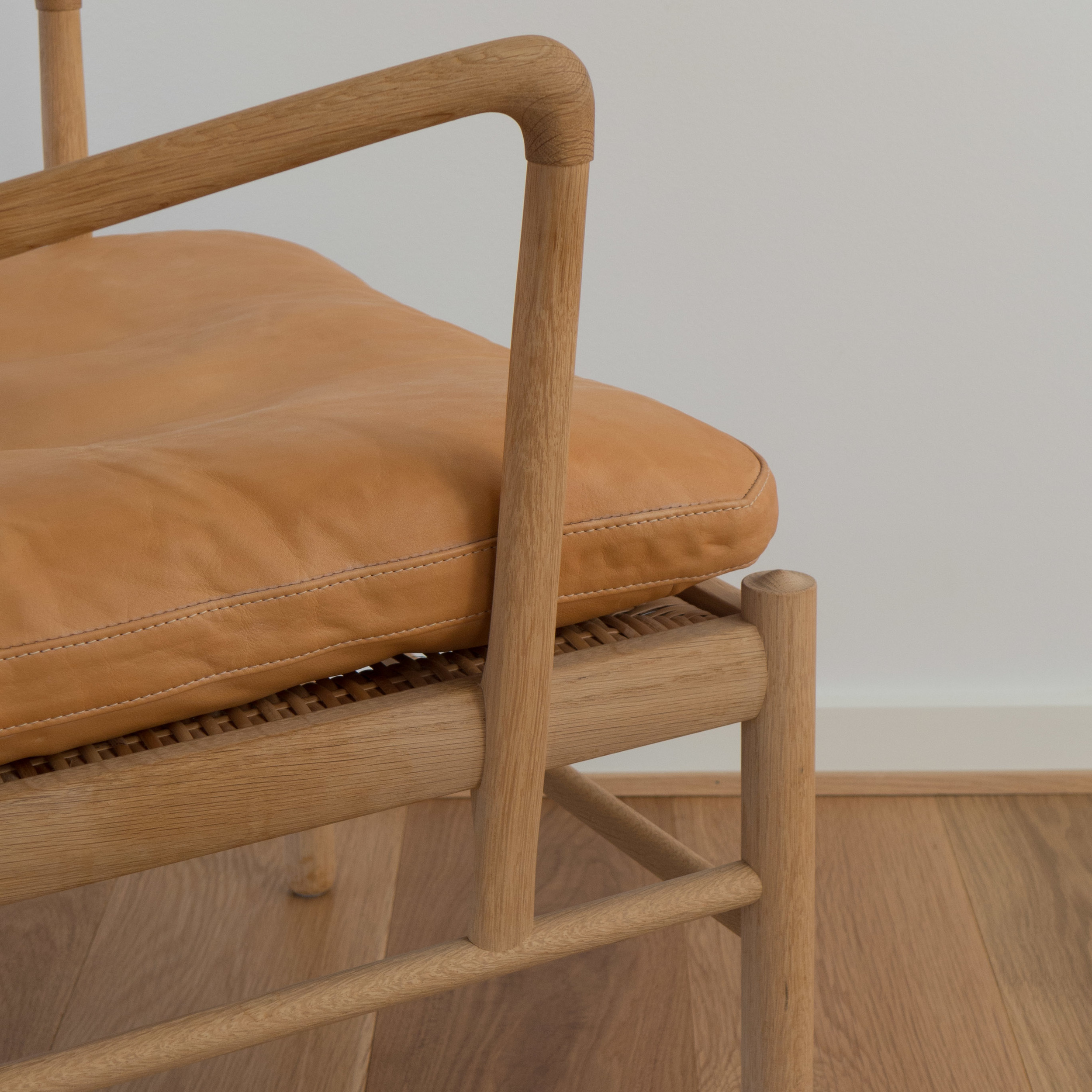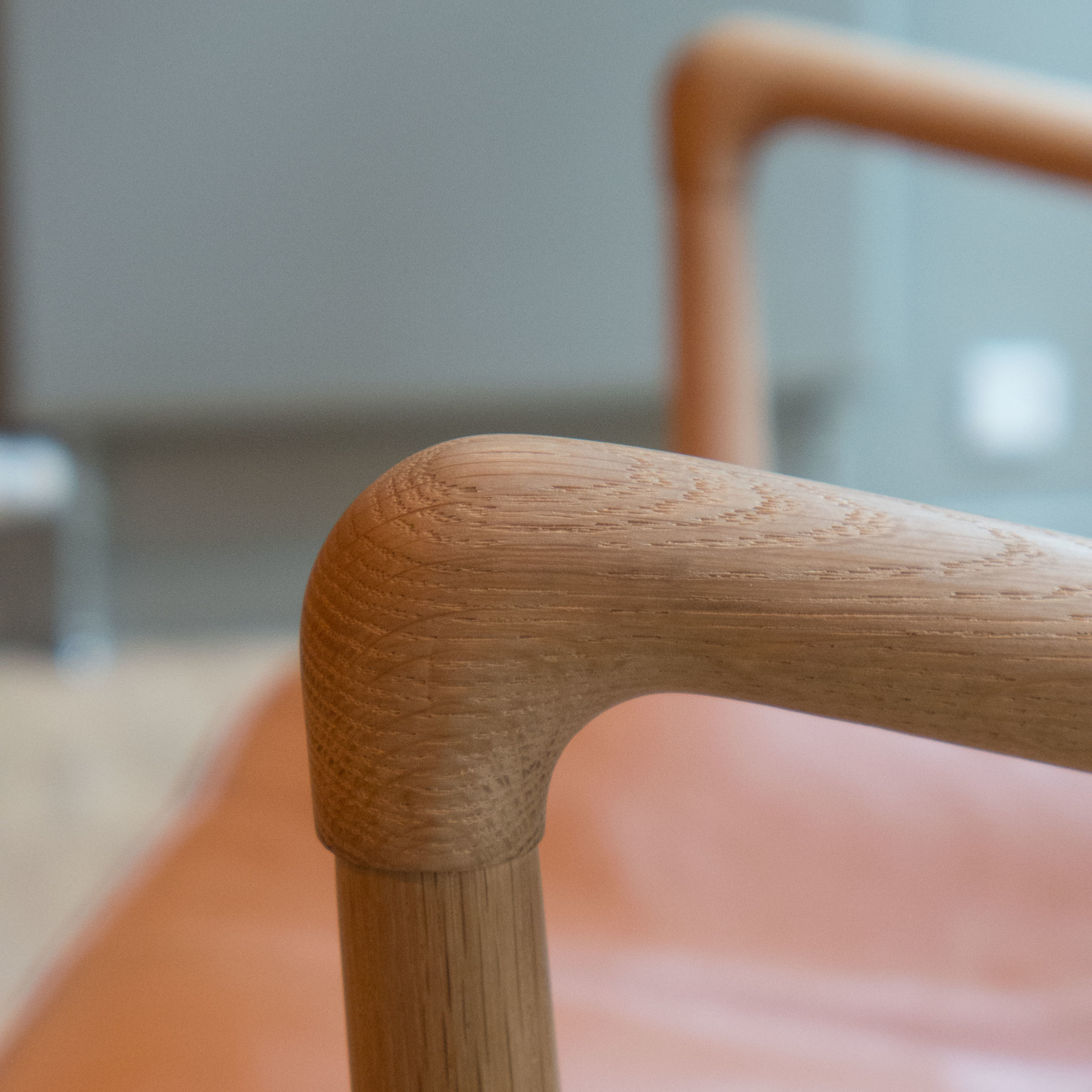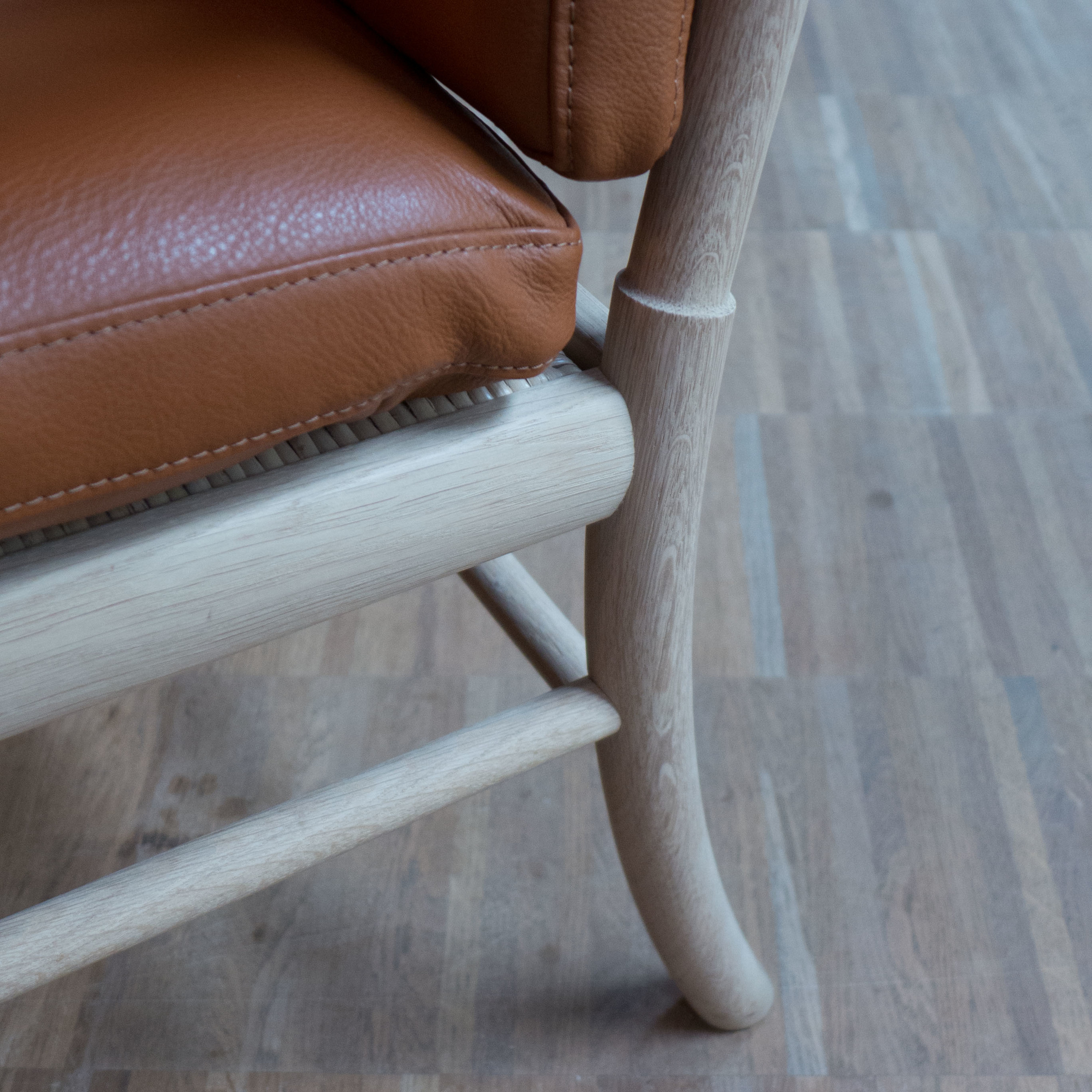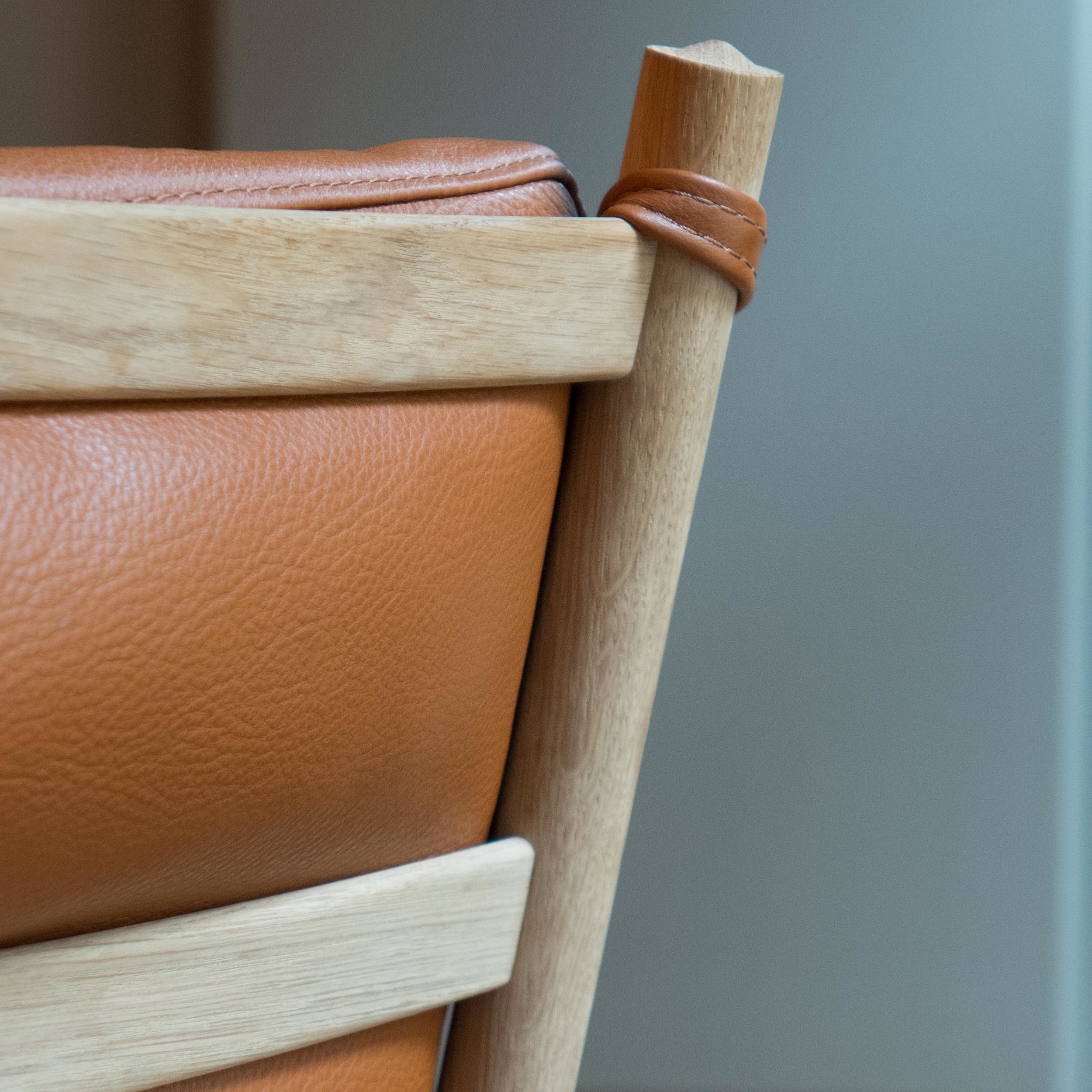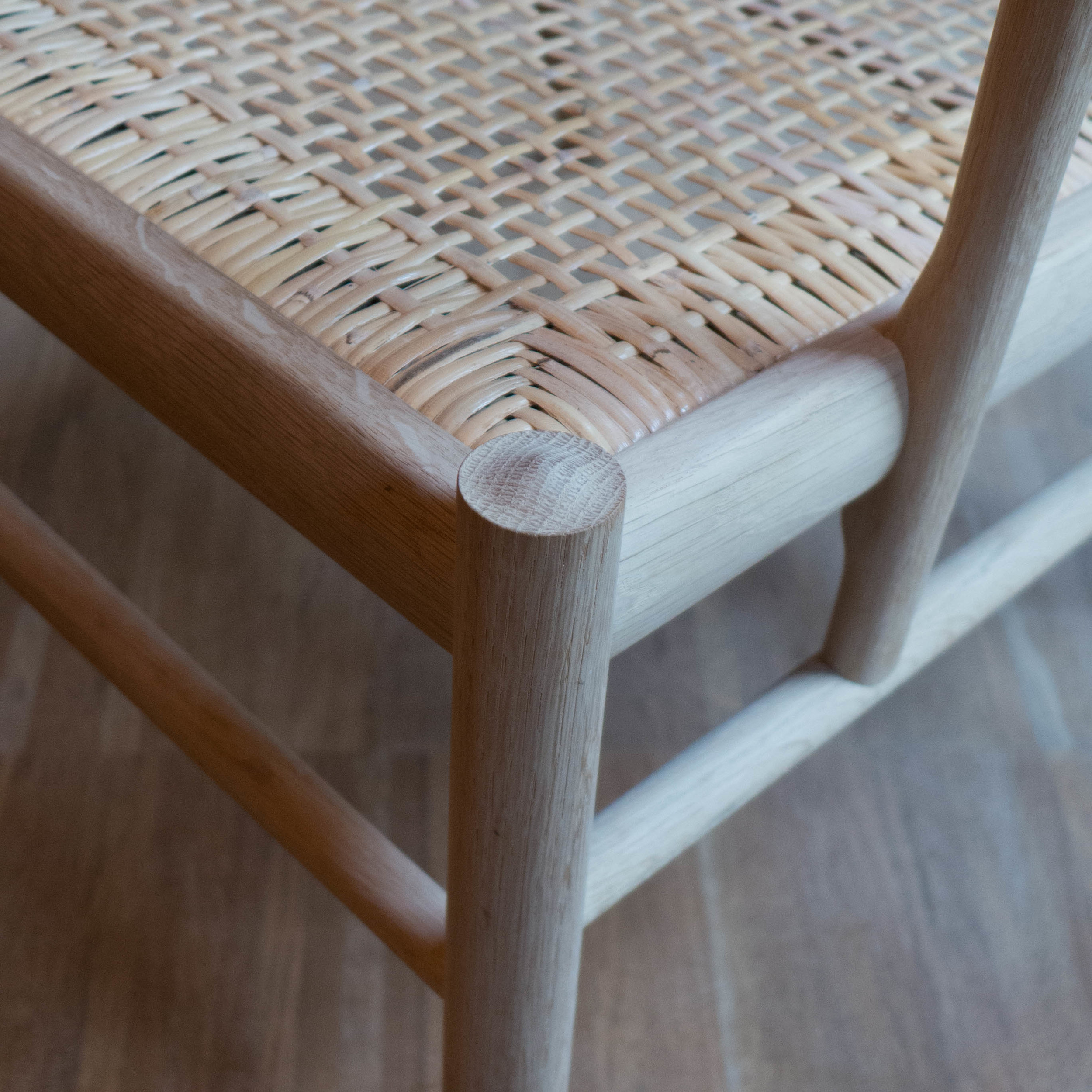Pelikanen / the Pelican by Finn Juhl 1940
/Finn Juhl (1912-1989) had trained as an architect, at the Royal Danish Academy of Art, and not as a furniture maker, so his design for the Pelican Chair was realised with the cabinet maker Niels Vodder and two of the chairs were shown at the exhibition of the Cabinet Makers’ Guild in 1940. With their strong sculptural form and simple but hefty wooden legs set at an angle, the chairs must have caused a fair bit of discussion and controversy at the exhibition and subsequently commercial production was limited.
A version of the chair - with thinner and upturned wings set lower to the back - was shown at the Cabinetmakers' Exhibition in 1939 with a sofa, desk, chairs and shelves that were all made by Niels Vodder. In a review, Hans Hansen wrote in Arkitekten that the “general opinion will probably be that the whole arrangement is most peculiar, but it offers a valuable chance to challenge established norms, and arouse discussion ....” and when this, the final version of the arm chair, was shown in 1940, Eiler Abel, again in Arkitekten, thought the chairs “resemble more than anything tired walruses.”
OneCollection reintroduced the design at the Cologne furniture fair in January 2001 and now, to mark its 75th anniversary, have produced a special edition of the chair covered in a fabric based on a drawing from 1942 entitled Macbeth by the Danish artist Asger Jorn - a contemporary of Juhl’s who studied in Paris under Fernand Léger in the late 30s and also collaborated with Le Corbusier.
Although the new Pelican is true to the scale and shape of the original chairs from the 1940s, those first chairs had a pine frame with several layers of upholstery but for the current version this has been replaced with a hard foam shell with a steel core.
height: 68cm
width: 85cm
depth: 76cm
height of seat: 37cm
these dimensions are from the chair now made by OneCollection


